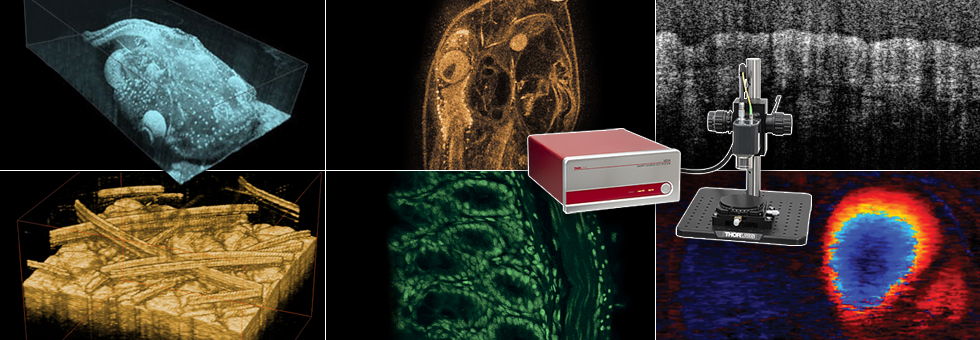Human Hair Structure


Please Wait
OCT Employed to Study Structure of Human Hair
Featured Researchers:
M. V. R. Velasco, A. R. Baby, F. D. Sarruf, T. M. Kaneko, R. E. Samad, N. D. Vieira Júnior, and A. Z. Freitas
|
Analysis and characterization of hair care products and their interaction with human hair has recently received considerable interest within the field of cosmetic science. As a result of continuous product advancements, there is a corresponding need to find noninvasive, reliable techniques for studying their efficacy and safety. Optical Coherence Tomography (OCT) is a promising noninvasive imaging technique that is capable of providing cross-sectional and volumetric images of sample structure. Using Thorlabs' OCP930SR OCT system (930 nm center wavelength; 6.2 μm axial resolution), researchers1 have demonstrated the ability to image the effects of hair care products on the morphology of human hair. In this study, Afro-ethnic hair samples were imaged prior to, and after, being immersed in a solution containing 18% ammonium thioglycolate, a common active ingredient in commercially available hair straightening products. Figure 1.1 shows the resulting cross-sectional and longitudinal OCT images for a hair sample pre- and post-treatment. Prior to application of the hair straightening solution, the three main hair structures - the medulla (innermost region), cortex (middle layer), and cuticle (outer covering) - are distinctly visible in both the cross-sectional [Figure 1.1 (a)] and longitudinal [Figure 1.1 (c)] OCT images. From the images obtained, the researchers were able to measure the overall hair strand diameter as well as the medulla diameter prior to treatment. In contrast, the medulla and cortex are no longer distinct after treatment [Figure 1.1 (b) and (d)], and the medulla diameter is no longer measurable. Although hair fibers exhibit exceptional resistance to external stimuli, exposure to this straightening solution led to a noteworthy change in the fiber morphology. Specifically, the penetration of the ammonium thioglycolate into the hair strand promoted a deleterious action that induced changes in the refractive index of the structures within the hair strand. These changes reduced the ability to distinguish those structures using OCT imaging. The nondestructive imaging capability of OCT is optimal for studies such as these since it allows the same hair fiber to be imaged in vivo during the entire treatment process. Additionally, since this imaging modality is capable of distinguishing between the three principal hair fiber structures, OCT is a viable option for hair-imaging studies outside of cosmetic science. For example, Afro-ethnic hair is known to show diameter variation along the shaft while Asian origin hair typically has a round fiber and is quite straight. Therefore, the ability to noninvasively characterize human hair's structure and shape is of particular interest to scientists in the fields of biology and forensics as a method for characterizing hair ethnicity.  Figure 1.1 OCT Images of Hair Samples OCT images of Afro-ethnic hair samples. (a) A cross-sectional image of a hair fiber shows the main hair structures: medulla, cortex, and cuticle. (b) A cross-sectional image of a hair fiber obtained after chemical treatment with an 18% ammonium thioglycolate solution. The medulla and cortex are no longer distinct. (c) and (d) show the same condition as (a) and (b) except the images were taken longitudinally. |
Reference:
M. V. R. Velasco, A. R. Baby, F. D. Sarruf, T. M. Kaneko, R. E. Samad, N. D. Vieira Júnior, and A. Z. Freitas, Skin Research and Technology, 15, 440-443 (2009).
| Posted Comments: | |
| No Comments Posted |
 Products Home
Products Home Human Hair Structure
Human Hair Structure